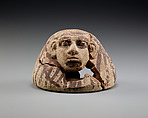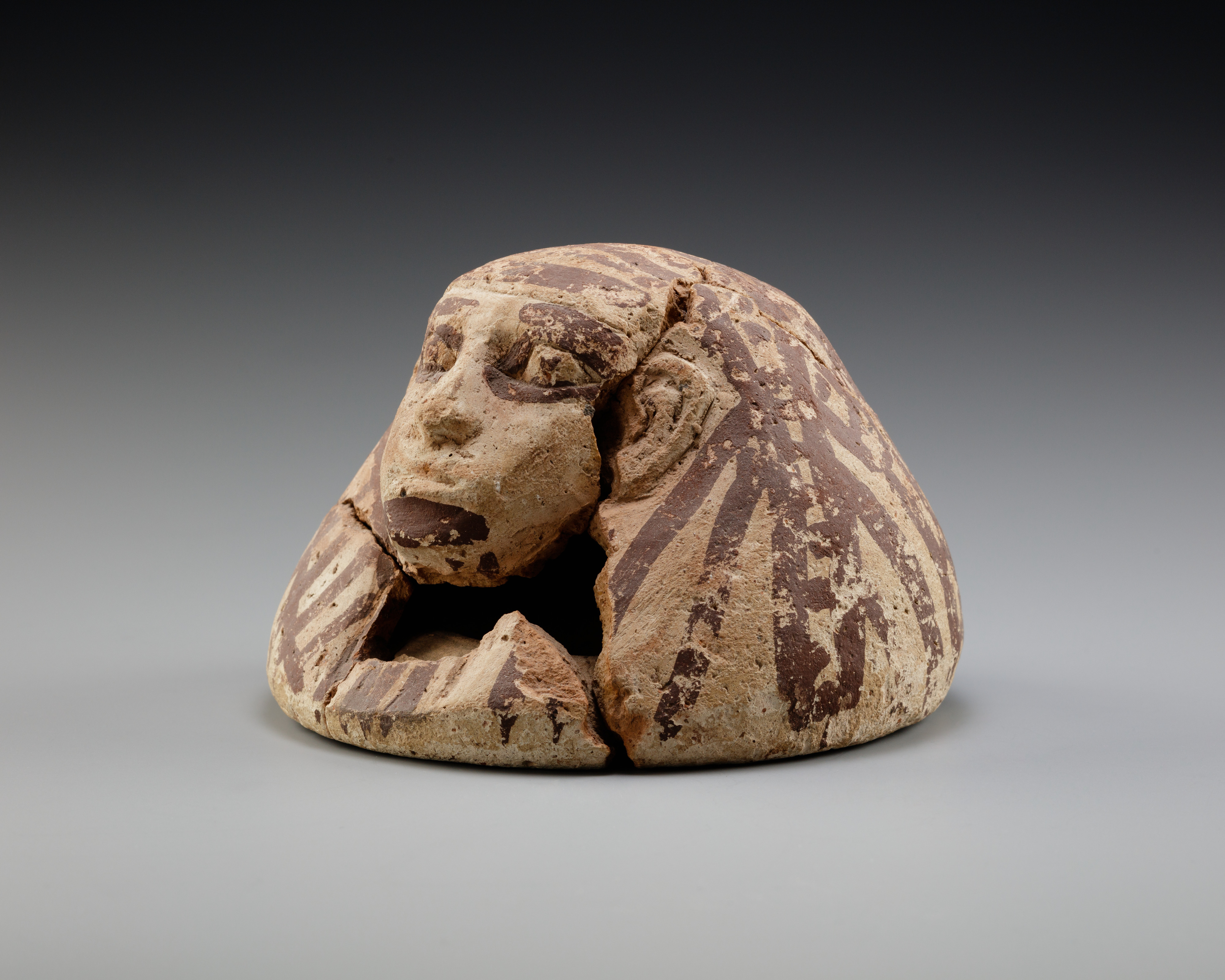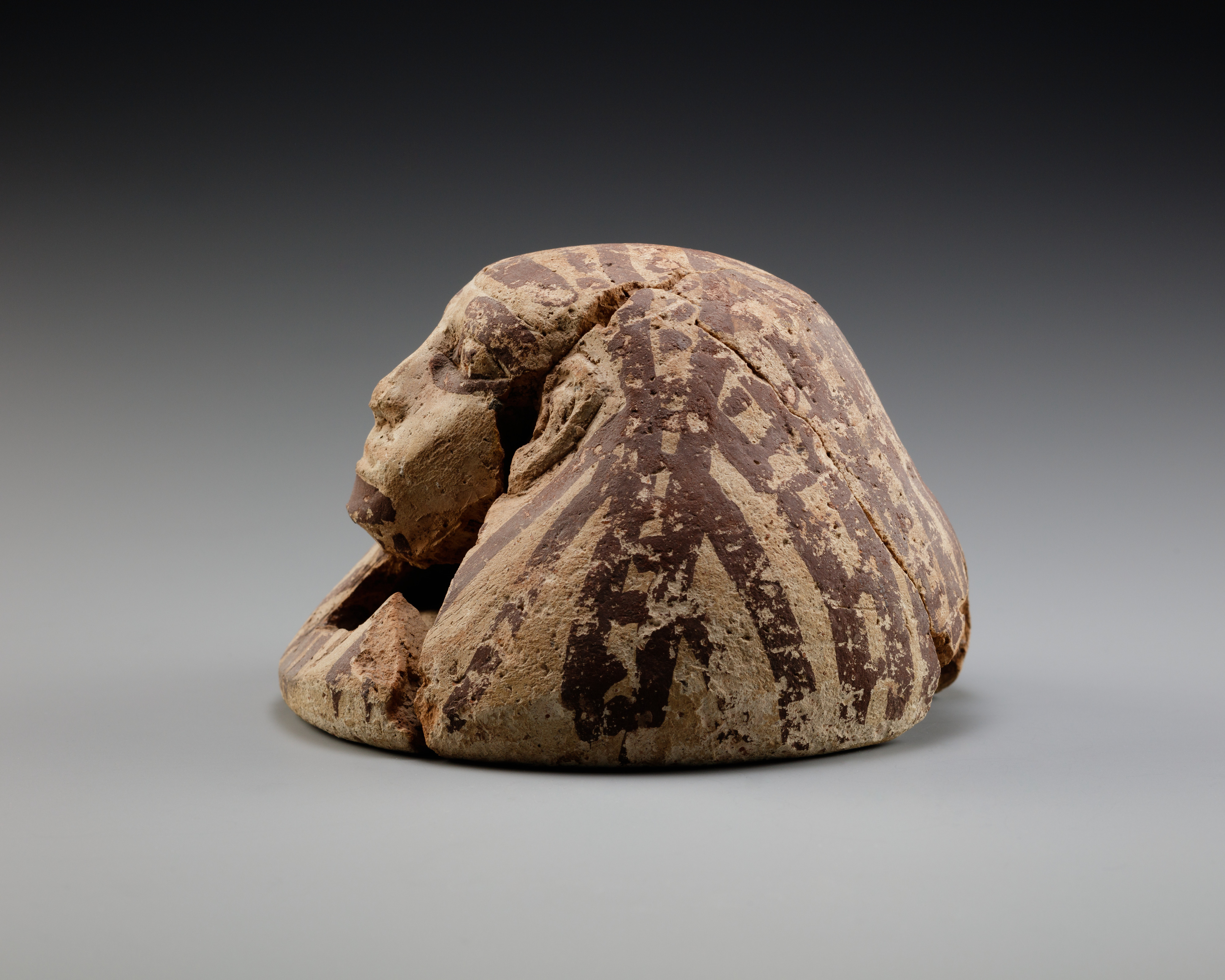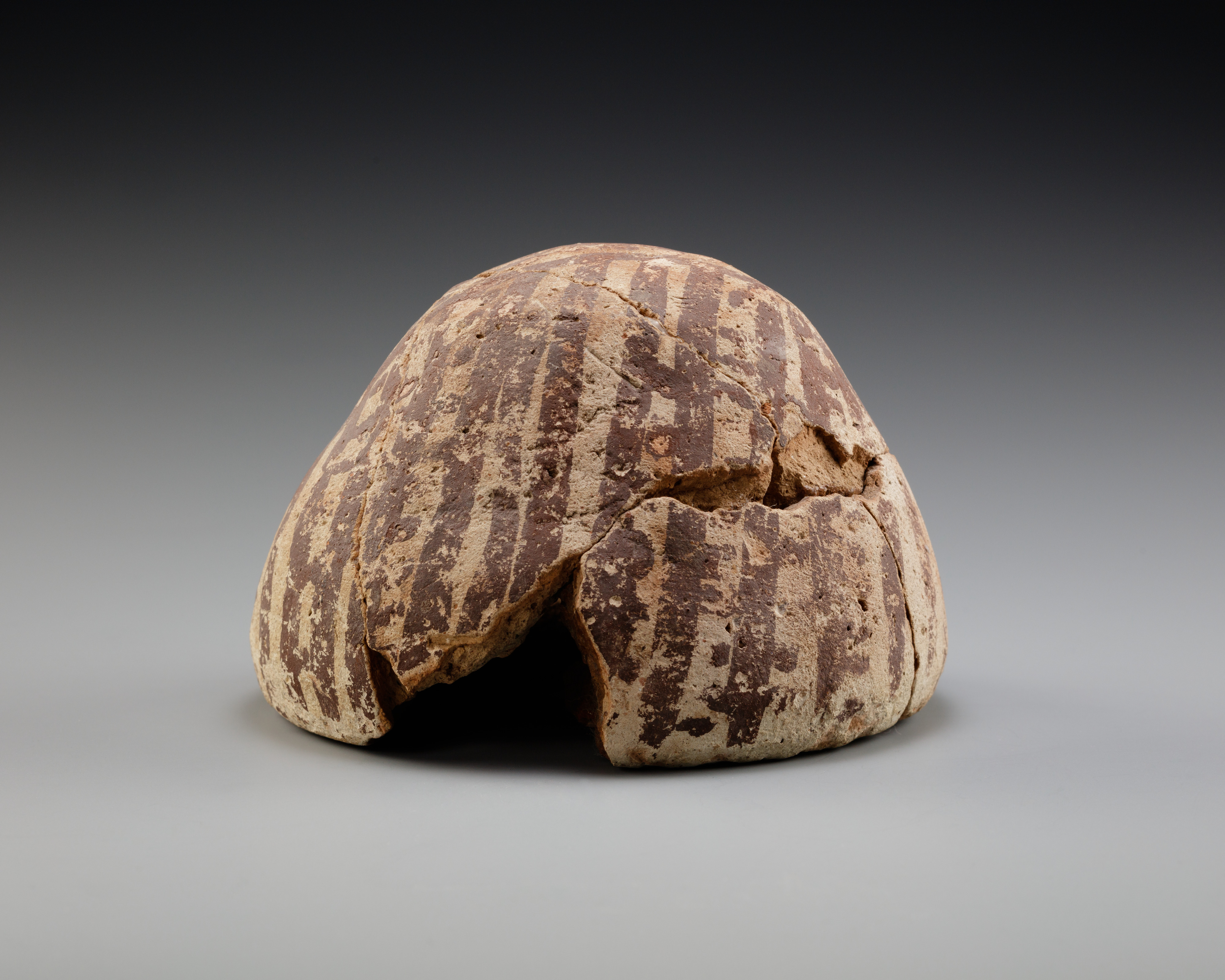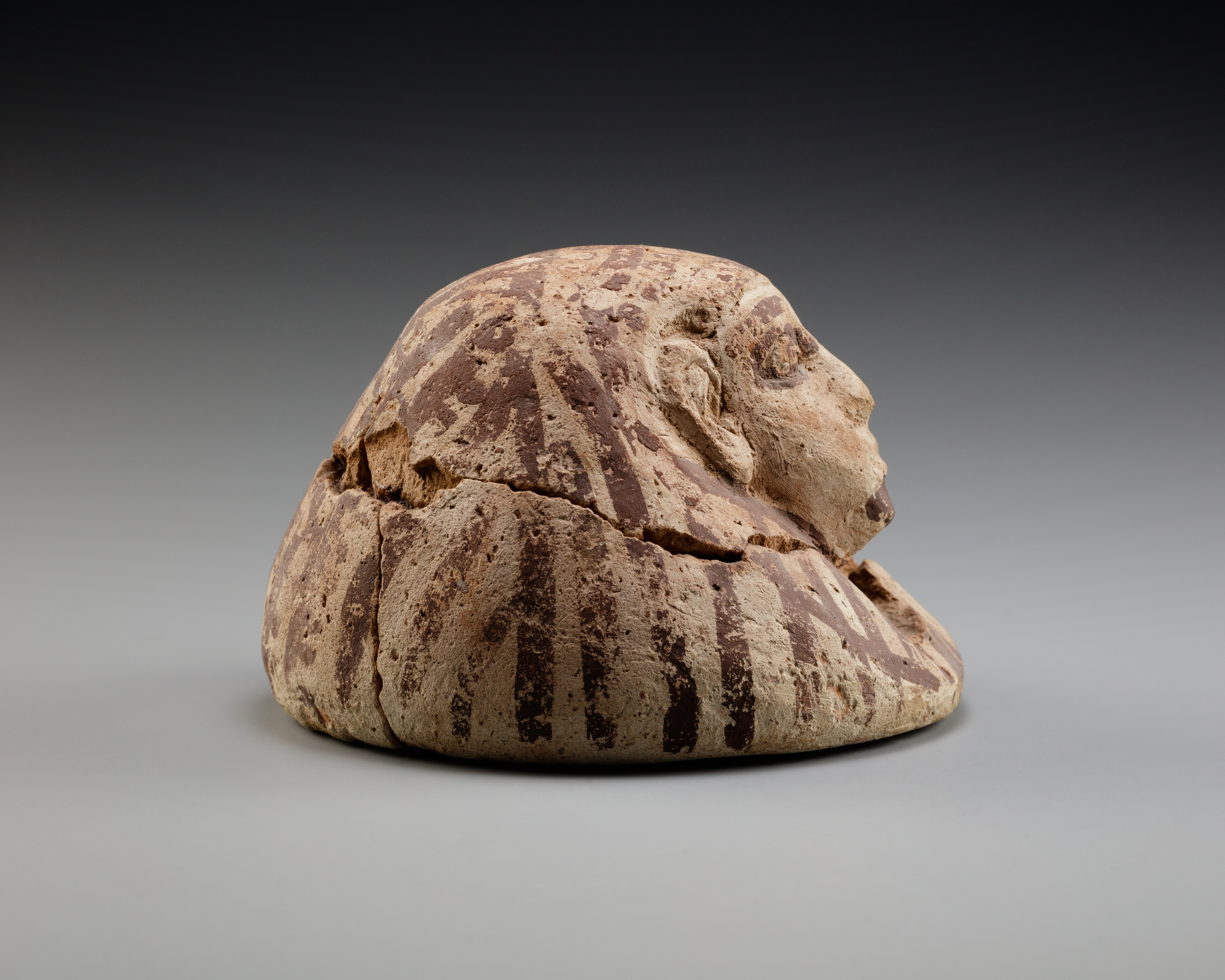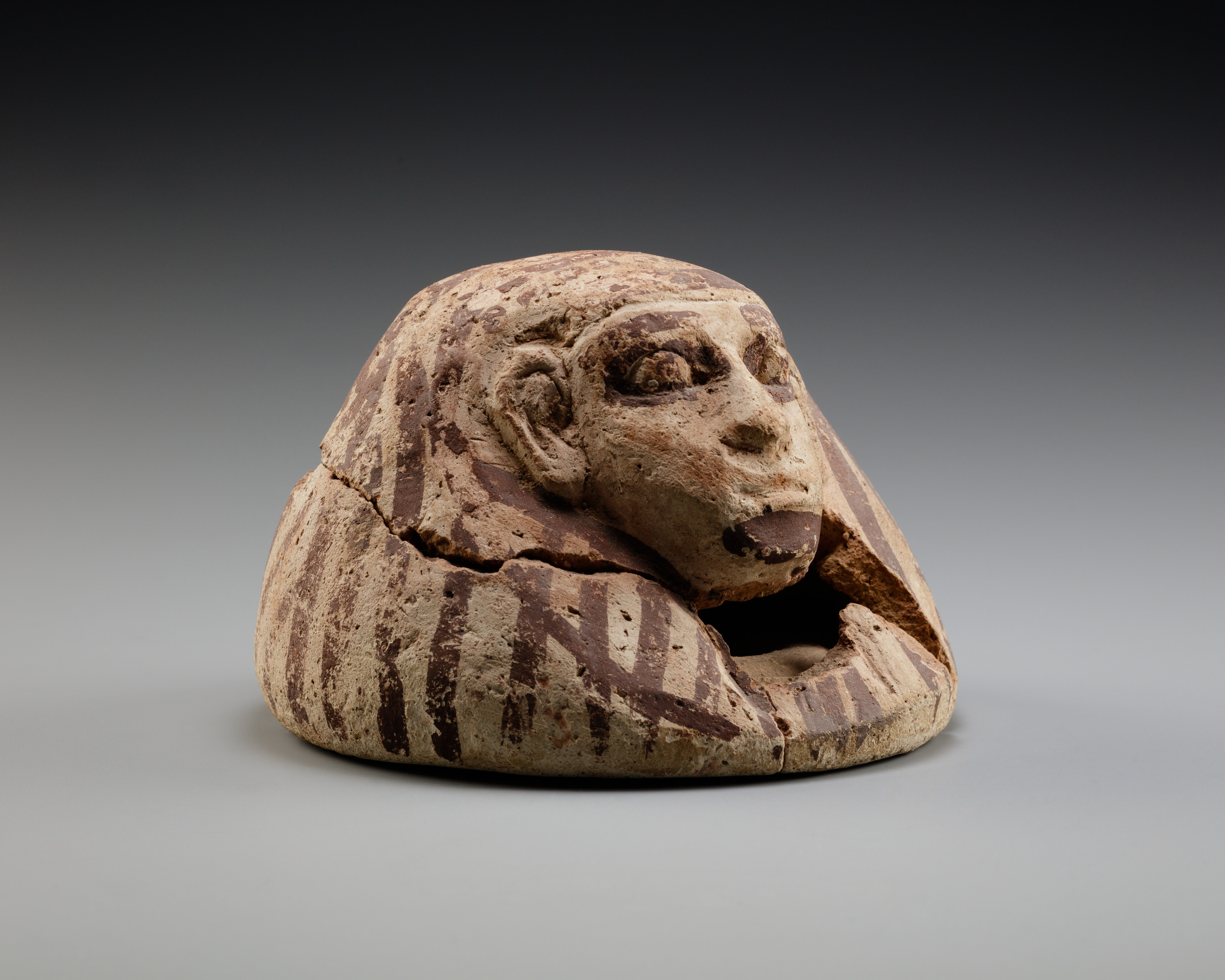Canopic Jar Lid Belonging to Senimen
New Kingdom
This human-headed lid once topped a canopic jar. It was discovered during the Museum's excavations in the vicinity of Theban tomb (TT) no. 252, the tomb of a man named Senimen.
A high official during the reign of Thutmose II and the joint reign of Hatshepsut and Thutmose III, Senimen was the steward and tutor of Princess Neferure, Thutmose II and Hatshepsut’s daughter. His now-destroyed tomb was located in the upper slope of Sheikh Abd el-Gurna’s hill, not far from one of the tombs of his famous contemporary and colleague Senenmut (TT 71).
Although uninscribed, this lid was found in association with additional pieces of funerary equipment and fragments of canopic jars bearing Senimen’s name (35.3.333b.1-.2 and 35.3.333c) suggesting it was part of his canopic set.
“Canopic jars” were used in ancient Egypt to hold the viscera removed from the deceased’s body during the mummification process. They traditionally came in sets of four, as the liver, lungs, stomach and intestines were embalmed and stored individually. The four containers were usually put inside a chest and placed in the tomb chamber.
The lid shows the summarily-modeled features of a man, with details such as the eyes, the beard and the wig added in dark brown paint. The other jars may have had human-headed lids as well, as this was typical for early Dynasty 18. The lids presumably evoked the deceased.
Due to rights restrictions, this image cannot be enlarged, viewed at full screen, or downloaded.
This artwork is meant to be viewed from right to left. Scroll left to view more.
